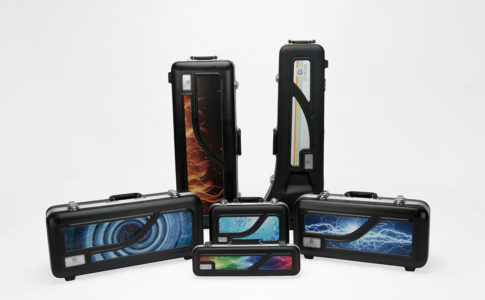Having just played a concert with trombonist Wycliffe Gordon—a force of nature if ever there was one—who performed on the soprano trombone as just one of many tricks in his bag, I dusted off my slide trumpet and brought it into the teaching studio.
The soprano trombone or slide trumpet, depending on your bias, looks like a small trombone but plays in the trumpet register. It uses a trumpet mouthpiece although Wycliffe uses a modified trombone mouthpiece on which he improbably plays throughout the entire trumpet register.
I have yet to extract anything resembling music from this horn—the slide positions are close together, so pitch is dicey— but I find it useful as a pedagogical tool.
Embouchure Adjustments
The slide makes the player aware of the physics of the instrument in a way that valves do not. Upon first putting it in the hands of a trumpet student, after a stern warning about not letting go of the slide, I have them play any 1st position note, the equivalent of open notes on the trumpet. They slowly gliss down a perfect fourth, extending the slide to 6th position.
If the sound deteriorates or thins, which is typical, that indicates that the embouchure is not adjusting at the same rate as the moving slide.
It is a real challenge to keep the sound clear and resonant. As you move higher in the register, it’s an added challenge not to slip up or down to the next partial.
Ear Training
Finding the chromatic half steps within the gliss adds the element of ear training, as unfamiliar slide positions are determined only by listening. Slurring upward while extending the slide, for example, from middle C to C#, is a weird sensation for trumpet players, though it is exactly what happens when we change valves from 0 to 1-2 for the same interval.
Slide trumpets are not that common, but if you get the chance, check it out. You will gain newfound respect for the horn Vincent Bach once described as “the only instrument to have survived for centuries virtually unimproved.”
About the Author
Chase Sanborn is a jazz trumpet player based in Toronto. He is on the faculty at the University of Toronto and is the author of “Brass Tactics,” “Jazz Tactics,” “Tuning Tactics” and “Music Business Tactics.” Chase is a Yamaha Artist.
Visit his website at www.chasesanborn.com. Questions about all things brass-related can be sent to info@chasesanborn.com.


